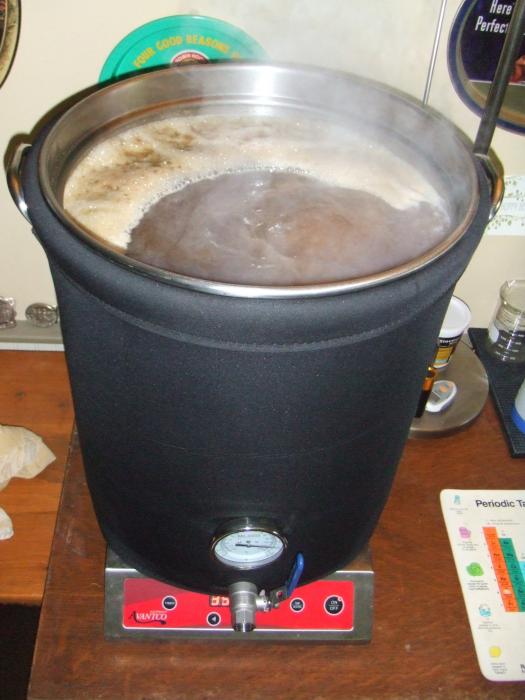I've gone to doing much the same thing as that UC Davis setup after seeing that photo in another thread. Except well, that cover turns out to be really pricey and I couldn't bring myself to buy one, plus I'm not sure I can find one to fit my kettle. So I made one out of a huge 18" stainless steel bowl.
View attachment 228402
I've made a Oktoberfest on this setup with a bunch of Pilsner malt and did a 90 minute boil. No cooked veg/creamed corn taste in the beer so I think my volatile boil off was solid. If anything was going to show DMS left in the wort, I'd think it would be a recipe that was over 50% pilsner malt. I'm still boiling off around 1 gallon of wort an hour, so plenty of steam is finding it's way out of the kettle to carry off anything nasty.
I can maintain a rolling boil with 2700 watts on the IC3500 with this on and no wrapping the kettle, if I leave the power maxed it will start to boil over even on 10 gallon batches. I also seem to reach a boil more quickly then even with the original flat cover installed. Give I have power to spare with this on I'm probably enlarge the size of my holes. This will also allow me to clean up my holes, they are pretty crap right now. I'm going to expand the holes with my new knock-out punch set which should make a cleaner cut and let me easily get it up to 4 holes that are 1-1/4" each.
Right now I have 4x probably around 3/4" diameter holes in the dome. I made a damper inspired by a weber BBQ kettle from scrap copper that lets me easily close the lid fully while bringing it up to a boil.





